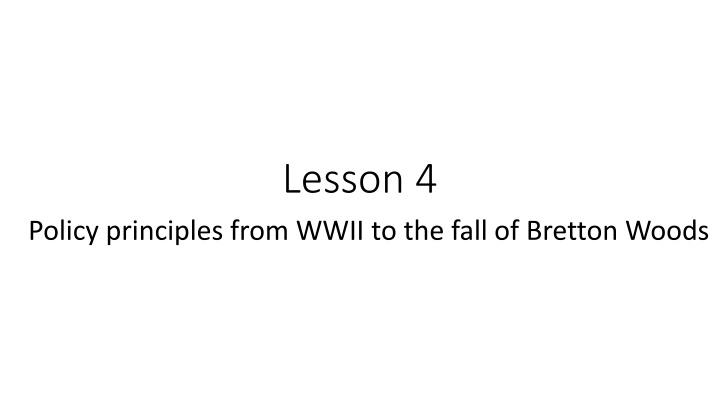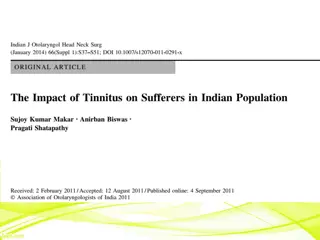Social Prescribers Addressing Housing, Social Isolation, and Financial Distress
In the realm of social prescribing, Eshita Unadkat highlights emerging themes surrounding housing, social isolation, unemployment, and financial distress. Collaborating regularly, their work focuses on supporting individuals facing these challenges through targeted interventions and community connections.
Download Presentation

Please find below an Image/Link to download the presentation.
The content on the website is provided AS IS for your information and personal use only. It may not be sold, licensed, or shared on other websites without obtaining consent from the author.If you encounter any issues during the download, it is possible that the publisher has removed the file from their server.
You are allowed to download the files provided on this website for personal or commercial use, subject to the condition that they are used lawfully. All files are the property of their respective owners.
The content on the website is provided AS IS for your information and personal use only. It may not be sold, licensed, or shared on other websites without obtaining consent from the author.
E N D
Presentation Transcript
Lesson 4 Policy principles from WWII to the fall of Bretton Woods
The guiding principles of policy theory under fixed exchange rates 1. The role of public spending in sustaining aggregate demand 2. Accommodating role of the central bank 3. The income policy
The general framework I = C I + + + Y G _ NX (1.1) C = c + c (Y- t Y) 0 1 (1.2) _ I = I - b i G = G (1.3) 0 (1.4) 0 T = Y NX t = (1.5) + x Y mY E (1.6) 0 0 w
The model examines an open economy in which equation (1.1) describes the equilibrium condition between aggregate supply and demand on the goods market. The behavioural functions of aggregate demand components expressed by private operators are summarised in the equations from (1.2) to (1.6). They describe the dependence of consumption on disposable income (equation 1.2); the relationship between the amount of investment and the interest rate in (1.3); the determinants of the current international income, domestic income and the exchange rate (equation 1.4), public expenditure assumed as exogenous (1.5) and revenues proportional to internal income. account balance, consisting of
The general framework II Y = L (1.7) _ i M/P = l - l w P = BP NX = MC = Y (1.8) 1 2 + z (1 ) (1.9) + i i MC * E (1.10) e ( ) (1.11)
Equation (1.7) indicates, according to a technological relationship expressed in the production function, the quantity of workers employed for a given amount of production. Equation (1.8) defines the equilibrium in the money market, while equation (1.9) is the way of setting prices according to income policies; external relations are represented by the balance of payments equilibrium (equation 1.10), which is the sum of net exports (equation 1.4) and net capital flows (equation 1.11). Parameter represents the degree of capital mobility, which, following the international conditions of that time, reflected the imperfect substitutability between domestic and foreign activities.
General remarks I The model presented in equations from (1.1) to (1.11) is the well-known Keynesian macroeconomic model in an open economy with the presence of the public sector. The sole additional element is equation 1.8 which entered the model in subsequent years with the introduction of the so-called neoclassical synthesis (the IS-LM model). The model consists of nine equations and a corresponding number of unknowns: Y, C, I, NX, L, M, MC, P, BP or E. The latter two variables need to be clarified: if the system is under a fixed exchange rate regime, the unknown foreign variable is the balance of payments, while in the presence of a flexible exchange rate regime the unknown variable is the value of currency E, being by definition BP=0. The policy instruments are the exogenous variables: t, G, i.
General remarks II While t, G and i are exogenous instrumental variables, there are further exogenous variables out of control of the national policy authorities: they have a national nature w and - or depend on foreign equilibria Y*, i* and E or depend on exchange rate expectations Ee. In Keynesian models, economic policy goals were full employment, the balance of payments equilibrium and the price level. These objectives correspond in the model to the unknowns L, BP and p, whose values have to be found according to the exogenous variables either under the control of the policy authority or set by foreign equilibria. Given the close relationship of proportionality between Y and L, as can be seen from equation (1.7), the goal of full employment will be approximated with Y.
Policy targets in function of exogenous variables Y = ( , , , y G t i Y E = ( , , , BP b G t i Y E E = ( , ,z) P p w , ) w (1.12) (1.13) e , , ) w w (1.14) Effects of instruments on policy targets
Equilibrium values in function of exogenous variables Y = ( , , h G i Z ) 0 ) (1.15) BP = ( , , l G i Z 1 (1.16) By assigning predefined values to the income level and to the balance of payments in this way they both become exogenous variables - it is possible to compute the values of the instrumental variables consistent with the desired values of Y and i * * G i = ( , g Y BP i Z ( , i Y BP G Z , , ) (1.17) 0 ) * * = , , (1.18) 1
The principle of effective market classification Y G BP G Y i BP i (1.19) Assignment of an instrument to a goal will depend on a "relative effectiveness" principle, the so-called effective market classification, originally theorized by the Dutch economist Jan Tinbergen (Tinbergen 1962) and subsequently by Robert Mundell (Mundell 1968). The allocation of fiscal policy to the objective of aggregate demand rather than to the external balance will be efficient if its relative effectiveness is greater than that of the interest rate and monetary policy on the external balance
In conclusion Moving on to consider the concrete experience of national economic policies in Europe during that period, it is generally possible to find destinations of the instruments by similar lines: fiscal policy was long considered the most effective measure to pursue the objective of full employment while monetary policy progressively assumed the role of a short-term external balance control instrument; price stability was pursued through policies aimed at increasing wages in line with productivity growth.























